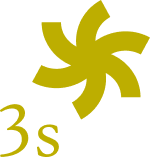Reflecting on the future of CVET with design fiction

image by rawpixel.com on Freepik
Artificial intelligence, robots, virtual reality… How will these new technologies change the way we work and learn? What are the long-term trends for CVET? And what does this mean for dealing with the challenges of the green and digital “double transition”? We are approaching all these questions in the Erasmus+ project “Into-CVET 2040” with an innovative approach that aims to stimulate a debate among key national and regional stakeholders about what future developments seem possible, but also desirable.
The “design fiction” approach is used to develop future scenarios for various aspects of CVET, such as lifelong guidance or funding. Design fiction is a method of projecting the future that emphasises the immersive character of fiction and its ability to make future changes credible over a longer period of time. It differs significantly from other scenario methods that are usually used in foresight studies. The view is thus broader and makes it possible to look beyond existing predictions for initial vocational education and training and also consider CVET, to focus on the dimension of the double transition and to consider the role of internal factors for the development of CVET in addition to external factors.
Five scenarios will be selected from a longer list of outlined scenarios and presented and discussed in workshops with stakeholders from the project partner countries Austria, France and Luxembourg. Based on the feedback, the scenarios will be further refined and visualised in a vision of a possible future using fictional narratives and illustrated with graphic elements. The materials produced in this project are intended to invite further dialogue.
Project: An invitation to an immersive experience journey into continuing vocational education and training in 2040 (Into-CVET 2040)
Contact: Mariya Dzhengozova
Client: Erasmus+ Small Scale project
Duration: 10/2023-09/2024


